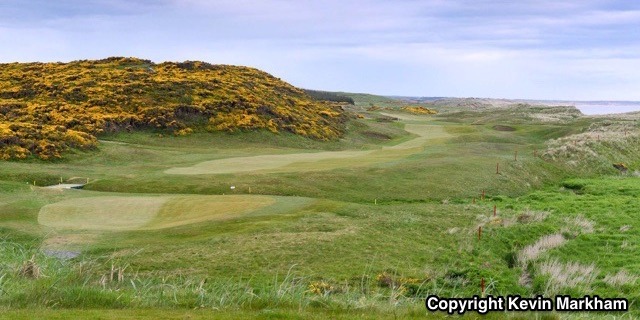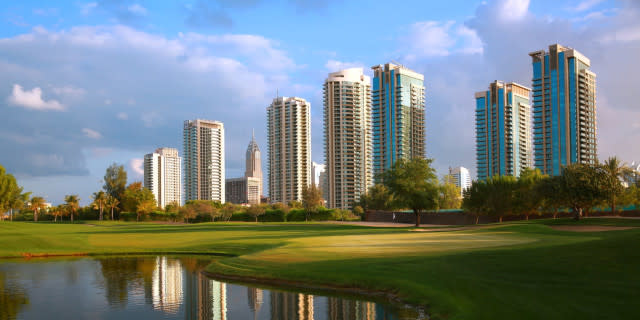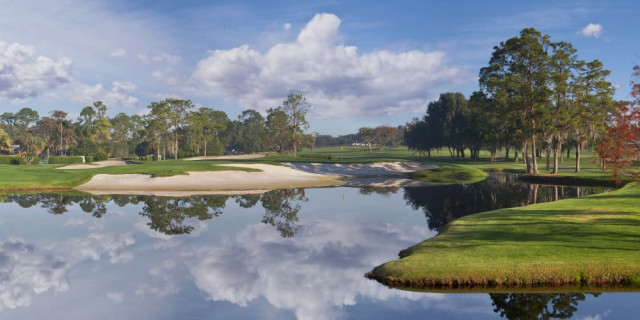Murcar Links Feature Review
Post from golf writer and golf blogger Kevin Markham.
Murcar is a links of simple ingenuity and raw beauty. It uses the land to maximum effect and… on a links… that means your best shots won’t always be rewarded. It’s the nature of deep, dipping and devious fairways, green run-offs, strategic bunkering and, of course, big unpredictable dunes. It places a premium on common sense, and not merely accuracy.
Considering that Murcar and Royal Aberdeen back onto each other – literally – it seems remarkable that it took someone 150 years to see the golfing merits of this chaotic run of dunes. Royal Aberdeen was founded in 1760 (and is the 6th oldest course in the world) yet Murcar wasn’t established until 1909. It is only fitting that it was the Royal Aberdeen Pro, Archie Simpson, who designed Murcar.

Murcar is no beast in terms of length. It is a par 71 off the back tees, and a par 69 off the yellows, when two of the par fives become fours. Believe me, that won’t make the course any easier. In fact, just the reverse. Even by the rules of links golf, Murcar can be cruel. There are several fairways where good shots can be swatted aside and there are blind shots and double blind shots (10 and 11). The swell on some fairways is hypnotic (7 and 17) while others (3 and 15) have a sweet uniqueness that can’t help but raise a smile. And all the while you have dunes drenched in gorse. It rarely comes too close, but it always keeps you on your toes.
This is the sort of place where running the ball into greens is a delight… and also a lottery. At least the greens are relatively flat and the borrows subtle. Once you’ve found the putting surfaces the job may not yet be done but the hard work is over.
Murcar Links is typically ranked behind Cruden Bay, Royal Aberdeen and Trump International, but while it doesn’t ooze the same class as this mighty trio it is every bit as good and a huge amount of fun. It is more squeezed than the others, but that is the natural run of the land. It makes the stretch of holes from 6 to 9 both terrifying and exhilarating. Balls may not get lost, here, but you will quickly learn that being off line means trying to reach greens by going over bunkers and all manner of hollows and humps.

That is what makes Murcar so interesting. The variety of holes calls for discipline, while also asking a lot of your game. You just never know what is going to come next. Play holes 1 and 2 and it all seems rather straightforward: then comes the 3rd with its split fairway on two levels, and a green secreted away behind a ridge of dunes. That’s when Murcar Links kicks off over a landscape that rises and falls, offering up wonderful tee shots and greens that sit low in the dunes or are perched up high. It calls for every shot you possess and, no doubt, several more should the wind be blowing in off the North Sea.
There is a brief warning, here: after walking off the 3rd green, don’t go to the tee directly behind the green. That’s the 10th tee at Royal Aberdeen. There are no barriers or fences or warnings, so it is an easy mistake to make. A popular tale tells of the Japanese golfers who started on Royal Aberdeen but finished up in Murcar’s clubhouse, calling the police because there was no sign of their car in the car park. Your 4th tee is up in the dunes to your left, right above the beach.
The 4th to the 9th is one long stretch of enthralling golf holes beside the sea, with most holes offering high tee boxes to really show off the hole ahead (and behind, if you care to look). Only the par three 5th heads in the opposite direction, but that makes it no less entertaining, the green nestling in a ring of gorse and swaying dunes. Holes 6 to 9 are utterly superb, rolling over and beside turbulent dunes, with narrow fairways, hidden hollows and bunkering (82 at last count) that can lure your ball from anywhere.

The hillock at that farthest end of the course offers four very different holes, with blind up-and-over shots on three of them (10, 11 and 13). It is a dramatic change of pace… and challenge… not to mention the best place to catch views of Aberdeen to the south and out to the ocean. While strong drives will serve you well on the first two holes, caution is required on 13. You only want to reach the top of the ridge above you, as the hole drops sharply thereafter, through thick rough, to the fairway below.
The remaining holes are farther inland, but no less entertaining for it. The short par four 15th drives out of the gorse onto a tilting fairway below, before rising sharply over a burn to the green. The dogleg 17th returns to that hypnotic rolling fairway which hides the putting surface and, in between, is a par three that hits straight out towards the sea, over the burn and a nest of gorse.

One of the great advantages of Murcar is that it is so different to Royal Aberdeen, even though it is merely an extension of the same landscape. It is tighter, more adventurous and holes offer a lot of variety. It is not somewhere where you need to shape shots or worry about demanding doglegs; Murcar is a course that needs an appreciation of links golf and the wherewithal to respond accordingly.
Website: www.murcarlinks.com
Kevin Markham is an Irish golf writer, blogger and photographer who writes for a number of Irish and UK golf websites & magazines. His book 'Hooked: An Amateur's Guide to the Golf Courses of Ireland' was published in 2011 and reviews all 350 golf courses which he played whilst travelling round Ireland in a campervan.
To read his blog visit: www.theirishgolfblog.com
Related Content:

















